Reluctant accountability. Scant hours before the legal reporting deadline, BC Hydro finally issued the 2015-16 report required by the Financial Information Act. Late on Friday September 30 – the end of quarter two – the agency also issued its first quarter report. Together, these documents demonstrate appalling mismanagement. It’s what happens when unqualified political hacks take charge of complicated corporations worth tens of billions.
I’ll provide additional commentary soon but these graphics should be enough to raise the ire of thoughtful British Columbians.

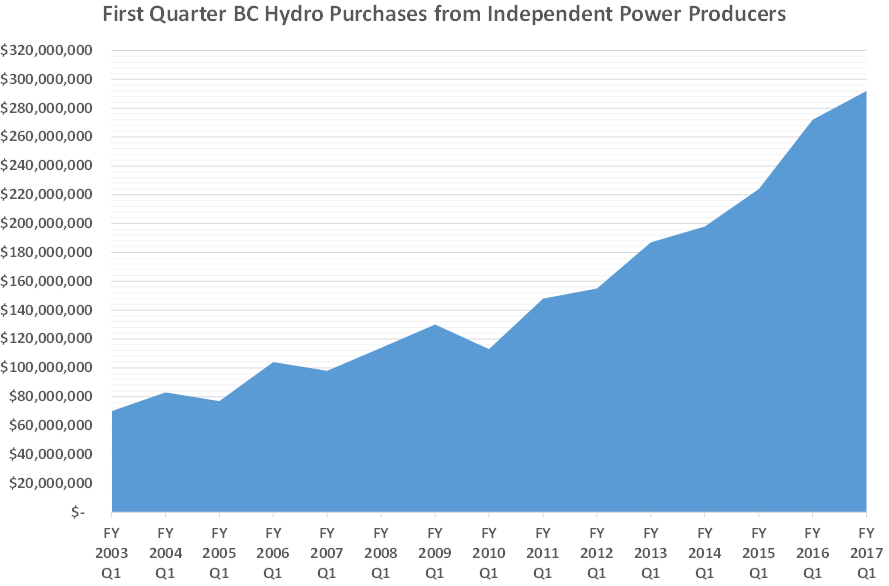
Despite a drop in domestic consumption and softening of markets outside BC, the volume of electricity purchased from independent producers in three months ended June 30/16 rose 8% over the same period a year earlier. BC Hydro paid $292 million to IPPs. For an equivalent amount of surplus power exported from the province, BC Hydro received $85 million.
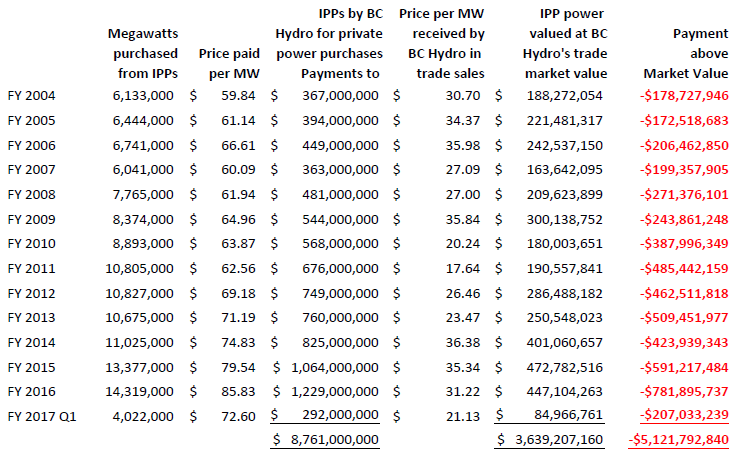
This is an example of what Green Party leader Andrew Weaver called a run-of-river “waterwheel” project. It is owned by AltaGas. The price paid by BC Hydro to AltaGas will be adjusted for inflation in each of the 58 contract years remaining. Luckily for the private power producer, taxpayers spent close to a billion dollars on the NW power transmission line so power from AltaGas could flow into the provincial grid.
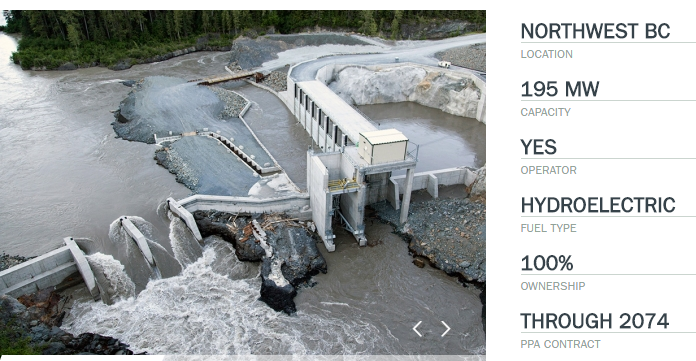
The volumes and average unit prices of power supplied by IPPs are growing steadily. So are BC Hydro’s losses from buying high and selling low.
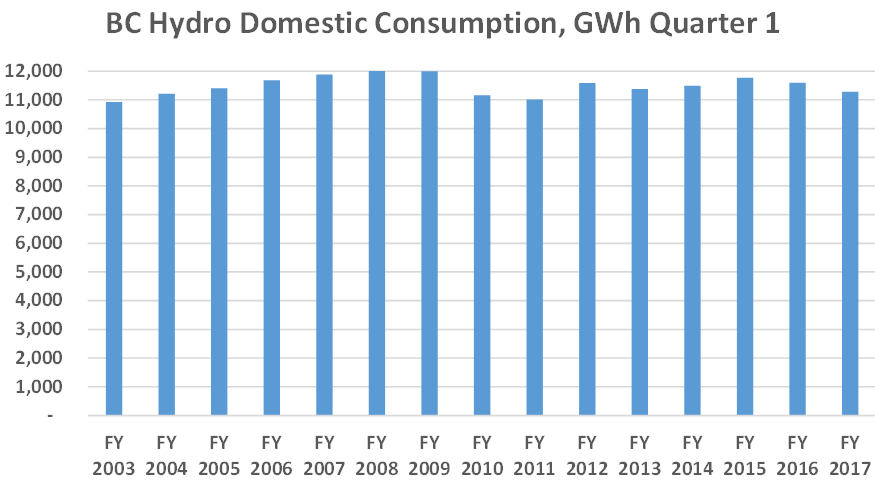

A recap of BC Hydro assets, taken from audited financial statements. It is worth remembering the company sold more power to BC’s residential, commercial and industrial customers in 2006 than in 2016. Most of the so called regulatory assets are worthless deferrals, representing payments made by BC Hydro that have not been expensed. It is accounting trickery intended to pretend the utility has been profitable.
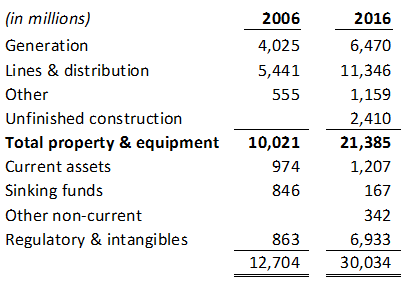
BC Hydro has experienced flat demand for more than a decade. Nevertheless, the value of its assets have grown 250% and purchases of private power grew 280% since 2005.
Add to this, the fact it has committed to spend another $10 billion or so to build the Site C dam. It is inexplicable.
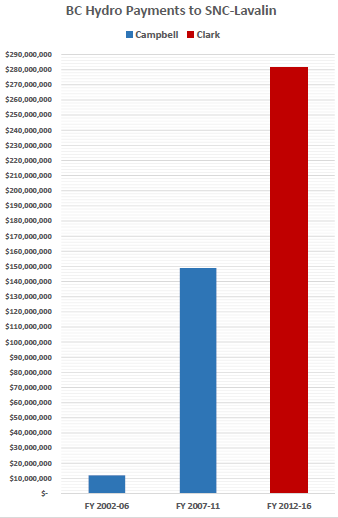
In 5 years since Christy Clark became Premier, BC Hydro paid $281 million to SNC-Lavalin, the infamous bribe giving company barred from projects by the Canadian International Development Agency and the World Bank. By sheer coincidence, Christy Clark’s guiding mentor in 2011 was Gwyn Morgan, then Chairman of the Board of SNC-Lavalin.
Hmmmm.
ADDENDUM:
3,200 people each cost BC Hydro more than $100,000 in remuneration and expenses for the year reported in the 2015-2016 Financial Information Act return.
Categories: BC Hydro, Clark, Christy, Morgan.Gwyn




Dr.John Calvert, Associate Professor, SFU Faculty of Health Sciences extraordinary 2007 book. LIQUID GOLD is one of those rarities, a clear, concise, outline of deadly predictions which, sadly.all came true. What started as Gordon Campbell’s cosy little “Run of River”, full of littte Mom and Pop operations, was utter bullshit and Dr Calvert warned us that ir would destroy our rivers, belong to the “Big Kidss” who would destroy our Crown Jewel, BC Hydro, the envy of the energy world, in short order.order. IT HAPPENED BIG TIME AND THE QUESTION NOW IS WILL THE LIBERALS PAY AT THE POLLS FOR THIS HUGE PAYOFF TO POLITICAL PALS OUT OF YOUR POCKET AND MINE AT OUR EVERLASTING LOSS?
Unless John Horgan and the NDP get off their asses, probably not!
LikeLike
Liguid Gold is an excellent book for anyone who wants to understand the scam that is BC Hydro
LikeLike
Dear Norman,
Good analysis of a tragic waste of public money. I am not sure if you have read my 2007 book Liquid Gold, but at that time I pointed out the enormous costs and risks the province was forcing BC Hydro to take with its IPP energy purchase agreements. I was hounded by the private power interests at numerous public meetings during this period when I criticized the government at the time. The private power interests claimed their EPAs were environmentally responsible and a good deal for the province. Now we all have to pay the bill. John Calvert
LikeLike
Hi Norm, would you mind pointing the curious to where the demand projections vs actual demand figures come from? Thanks a bunch.
LikeLike
There is a small mistake in the first paragraph: ‘It’s what happens when unqualified political hacks take charge of complicated corporations worth tens of billions.’ To us, they are unqualified, to their masters they are doing exactly as planned. If you look at the charts, numbers etc. from that lens they have certainly done their job. They also were masterful in duping the climate change people into a carbon tax regime that will dwarf the IPP fiasco by 10’s of billions, which we will all pay for while Oil and Gas companies use Site C power for carbon ‘credits’ The government will never enact laws against their own investments they have in ALL these companies.
LikeLike
All the BCNDP has to do is put an end to the corruption and British Columbia will fund free post secondary education, a $15 Minimum Wage, and affordable housing.
The crooks are keeping us broke and it’s time we ended their reign.
LikeLike
Have you a clear notion of how Hydros asset value has climbed so much? Aside from the land value of hydro real estate in the lower mainland, and improvements or extensions made to existing Hydro facilities and transmission is there anything else? Does Hydro count as assets the contracts they have for IPP power? Has their inflation indexing been set high to provide an excuse for the dividends? Lots of questions.
LikeLike
Thanks Randy. In response to your request for clarity, I added a recap that compares assets shown on the BC Hydro financial statements in 2006 and 2016.
LikeLiked by 1 person
Norm, I’ve been quoting you on $672 million paid over market value to IPPs in 2016, as per your article IPPs received $672 million above market price in 2015 — though in today’s post, you say it was $591 million.
Is it a matter of calendar year as opposed to fiscal year?
LikeLike
I try to be precise in making calculations but the explanations sometimes need careful reading.
In that April article, I noted that BC Hydro bought power worth $1,217 billion from IPPs in 2015. Indeed, I was talking about the calendar year since the quarter ending December 31, 2015 report had just become available. From US Energy Dept figures, I calculated average Mid-C market prices, adjusted to Canadian dollars according to Bank of Canada rates.
Afterward, I became aware that BC was dumping a fair amount of surplus power in Alberta and decided that instead of imputing market value from U.S. numbers (that is where out-of-province sales largely went in earlier years), the price BC Hydro was realizing from selling surplus power through trade sales outside BC was the best of all indicators of actual market price. (I hope we can assume the utility exports power at market price but, frankly, I worry if some sales are not truly at arms-length.)
I created the table (latest update in today’s article is indeed based on fiscal year dates) that revalues purchases from IPPs at the price BCH realized in trade sales. What they get from sales outside BC follows the Mid-C rate to a fair degree but it is not exact.
Yet, we’re painting with broad strokes here. As we know, some IPP projects serving local and remote areas are entirely legitimate.
But ones like the AltaGas’ Forest Kerr project are huge money losers for the province. Forest Kerr is in the wilderness, 225 km due north of the southernmost part of the Alaska panhandle. AltaGas gets paid when the power hits the intertie point of the Northwest Transmission Line. That facility cost taxpayers many hundreds of millions of dollars and it primarily serves AltaGas and Imperial Metals. In addition to the capital cost of handling Forest Kerr power, BC Hydro pays the very significant costs of taking it to where it can be sold. If that is 1,000 km away, transmission expenses are substantial.
Undoubtedly, we pay much more than market price for private power. Sometimes, that can be justified and if we had project by project detail available, we could determine with greater accuracy. However, we would still be reporting that private power producers have gained billions of dollars through BC Hydro’s political mismanagement. Whether it’s $4.2 bn or $5.1 bn doesn’t much matter. It is indicative of extreme carelessness in almost every major thrust of the BC Government.
LikeLike
This from a reply I made to a Tyee article…..a couple of lines are cut and pastes from the site link provided. First, as Norm says “As we know, some IPP projects serving local and remote areas are entirely legitimate. ” Very true, and represents the spirit in which the whole program began. Second, ‘BC was dumping a fair amount of surplus power in Alberta’. Also very true, and a point that needs further examination. Unfortunately such examination falls to people like Norm who just don’t have enough hours in the day, nor a secure source of income form either the BC government, a professional news organization, or a power company. All of them sit together with BC Liberal party insiders in a room with David Clayton Thomas on an endless loop over the PA system. Ride a painted pony, let the spinnin’ wheel spin.
“It appears the NEB data and the BC Hydro data are not comparing apples and apples. It concerns me there are so many footnotes on the NEB data to take into account. For instance, the NEB data does not include inter-provincial trade. I are not smart enuff to know what it all means, but I do know that there are intertie agreements between Alberta and BC….and that prices are not always reflective of true market value. For example, power flows to
a province when there is sufficient excess transmission capacity between the exporting region and load and no higher value destination for that energy (domestic emergency or higher priced export
market) exists at that time. When Powerex sells into Alberta’s market under those conditions it can not only recover the15 marginal cost of its production, but in periods of Alberta power scarcity, it can extract rents from Alberta consumers. Just saying the NEB data and the BC Hydro data are not apples and apples.”
Click to access IPPSA_Final_Report_Nov_11.pdf
LikeLike
Thank you Norm, Rafe and all participants at this site. I feel heartened by the steady flow of facts. At some point government will be made to listen.
How’s This For A Novel Idea?…Government Working On Behalf Of Its’ Citizens Instead Of The Pockets Of It’s Corporate Sponsors.
LikeLike
ECOWATCH OCTOBER 1 – Gary Wockner, PhD, is an international river advocate and author of the forthcoming book, River Warrior: Fighting to Protect the World’s Rivers. Contact Wockner at Gary@GaryWockner.com.
Hydropower is dirty energy, and should be regarded just like fossil fuel. And environmentalists, far from embracing it, should be battling to shut down hydropower plants and block the arrival of new ones just as vigorously as we work to close and prevent construction of dirty coal plants.
At this critical moment in the planet’s history, philanthropic funders that support action against climate change must fund a movement against hydropower. Unless the scientific truth about methane emissions from dams is more widely acknowledged, pura vida will never be achieved in Costa Rica or anywhere else.
Over the last two years, I’ve written four articles about the massive problem with methane emissions from hydropower dams and reservoirs. Finally, the mainstream media covered this story Thursday after an international team of scientists released a new study that synthesizes more than 100 scholarly articles on the topic.
The Seattle Times headline read, “Hydropower Isn’t Carbon Neutral After All” and the Washington Post headline read, “Oh Great—Scientists Have Confirmed A Key New Source Of Greenhouse Gases”
The scientific study featured in these news articles will appear next week in the journal Bioscience and is co-authored by 10 international researchers including scientists at the U.S. Environmental Protection Agency. As reported in the Seattle Times and Washington Post, key findings in the scientific study include:
Methane emissions from dams and reservoirs across the planet, including hydropower, are estimated to be significantly larger than previously thought, approximately equal to 1 gigaton per year.
The international boom in the construction of hydropower projects is rapidly accelerating this increase in methane emissions.
Reservoirs in mid-latitude areas of the planet, including in the U.S., can have as high of methane emissions as those in tropical countries which have been measured to emit as much greenhouse gases as coal-fired power plants.
The United Nation’s Intergovernmental Panel on Climate Change (IPCC) should now better account for these massive methane emissions and include them in climate change scenarios.
In the four articles I wrote:
Why Hydropower Is Not Clean Or Cheap
Hydropower Will Undermine COP21 As False Solution To Climate Change
The Hydropower Methane Bomb No One Wants To Talk About
Dams Cause Climate Change, They Are Not Clean Energy
I laid out the science behind why dams and reservoirs cause methane emissions. I explained how there are hundreds of dams under construction right now and thousands in the planning process, and I described how the U.S. government and the IPCC need to address this issue because countries around the world are sweeping it under the rug.
Now I’m taking it a step farther. I’m calling for a global moratorium on the construction and permitting of all hydropower projects.
Hydropower is being pushed forward as “clean” and “carbon free” by an industry that is making hundreds of billions of dollars per year building dams. Countries, including the U.S., are in denial about how hydropower is contributing to climate change. Corruption in developing countries is undermining democracy and endangering the lives of local people who are fighting these projects. The murder of dam-fighter Berta Cáceres in Honduras got widespread international attention, but it is only the tip of the iceberg for the human rights abuses faced by local people fighting hydropower across the planet.
A moratorium on hydropower is the only just path forward.
WHAT SAY YOU, CHRISTY, JUSTIN, RE SITE C? WILL YOUR LEGACY BE TAKING BC DOWN THIS PATH?
LikeLike
It is being pushed as clean and carbon free so they can use it under cap and trade to steal money from all classes and give it to oil and gas companies to make our oil/LNG etc. more competitive on the open market. Perhaps the most brilliant deception government has pulled in years. Suck up power from Site C, make all your operation net positive ‘carbon’ and the government will use the legislation to increase profits of their darling investments in oil and gas. The provinces let JT take the heat because he is untouchable right now. This was obvious even before he got elected. You need only look through a few government pension plans to notice that they will never ‘stick it to them’ with this tax and this is a primary driver of Site C. To think those that fought hard for this tax will see it be the excuse to destroy more of this country. Now, they cannot go back on it and that was the plan of Notley, Trudeau and Clark from the beginning. How people did not see this coming is a mystery. There will never be a time when giving the greatest wasters of resources more resources to save the planet will work. While they tell the people there is a war on carbon, they are fighting wars for carbon and using our money to procure more O+G overseas for the very oil companies the carbon tax was made for.
LikeLike
“…these graphics should be enough to raise the ire of thoughtful British Columbians.”
For sure — but they need to see them first.
I’ve been texting with a friend who has just started reading this blog. Since he’s been politically engaged for at least a few years, I assumed he would have been directed this way long ago. His example suggests to me that there are possibly many thinking British Columbians who haven’t heard of Norman Farrell yet.
There is so much to know and so many issues to have a handle on but the BC Hydro/IPP file should be front-and-centre in the 2017 election. Hydro rates — and Hydro debt — affect all citizens and industries.
LikeLike
Hopefully now that Jon McComb has had you on to talk about this and directing more eyes to your website , the “journalists” we have around here might be shamed into asking for a full blown audit/investigation of BC Hydro and its operations. Hopefully kind of like the Globe and Mail shamed the banks into requiring to verify income for foreign investors. You know ….journalism. As for our premier Christy Trump , she and her crony capitalist friends are putting BC first all right . First to insolvency.
LikeLike
BC Hydro’s current CEO, Jessica McDonald, from Linkedin:
“Prior experience includes commercial mediation and negotiation on major infrastructure and industrial projects in BC (such as?), Deputy Minister in the BC government for 6 years as well as many other posts in the government under numerous administrations beginning in 1991.
From 2005 to 2009 she held the most senior public service position in the provincial government as Deputy Minister to the Premier, Cabinet Secretary and Head of the BC Public Service, responsible for oversight of all aspects of government operations.”
The BC Clean Energy Act dates from 2010. It is a huge giveaway to IPPs at BC Hydro’s expense, exempts Site C from BCUC, etc.
https://ca.linkedin.com/in/jessicalmcdonald
LikeLike
If I were an articulate reader of this blog I would say what Lew said…..which is lots. If I were equally articulate, but less informed and less passionate about our province I would say what our “mew”stream media is saying…..nothing. Suffice to say my ire is raised.
LikeLike
What would happen to the CEO and Board of a private corporation operating in this manner?
Without a doubt, shareholders would be screaming for their removal at a minimum, and possibly for a criminal investigation. Unless of course, they didn’t know because they were being misled and kept in the dark by contrived reports and projections, and unsupported dividends were being paid to mask the true financial situation.
By intervening with several pieces of amending legislation, thereby keeping the BCUC from its mandate to ensure rates are set to recover the true costs incurred, the BC Liberal government is effectively misleading and keeping the public in the dark about BC Hydro’s true financial situation.
A functioning press would ensure the complete details were presented to the public, and it’s hard to believe an electorate thusly informed wouldn’t fire those responsible.
Sadly, BC doesn’t have a functioning press.
LikeLike